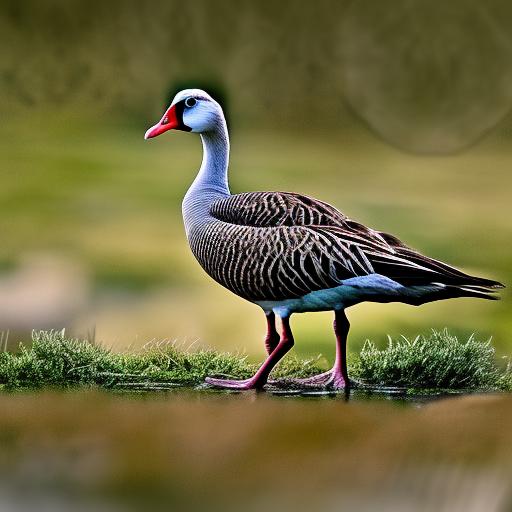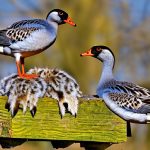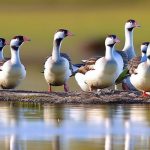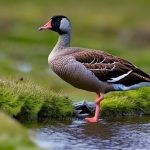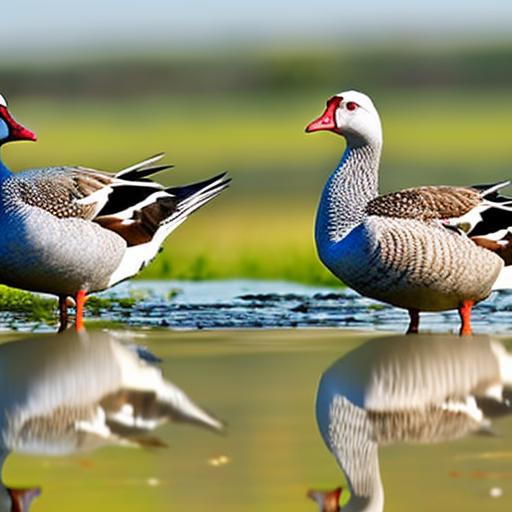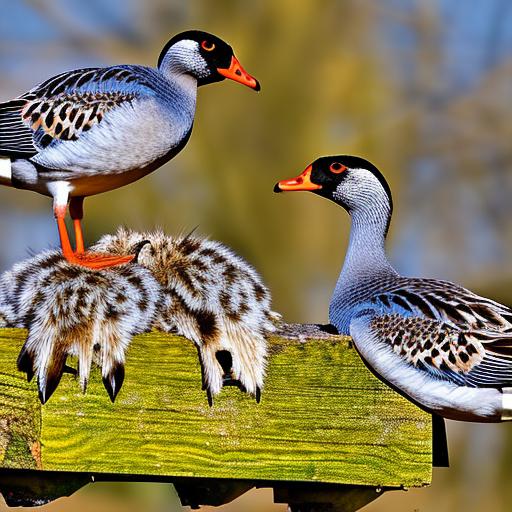Geese are known for their elaborate and beautiful mating dances, which are a crucial part of their courtship rituals. These dances are a way for geese to communicate their readiness to mate and to establish a bond with a potential partner. The mating dance typically involves the male goose performing a series of intricate movements, such as head bobbing, wing flapping, and honking, to attract the attention of a female. The female goose will then respond with her own set of movements, signaling her interest in the male. This dance continues until the pair has established a strong bond and is ready to mate.
The mating dance of geese is not only a beautiful display of nature, but it also serves an important purpose in the reproductive process. By engaging in these elaborate dances, geese are able to assess the suitability of potential mates and ensure that they are choosing a partner who is healthy and capable of producing strong offspring. Additionally, the mating dance helps to strengthen the bond between mates, laying the foundation for a successful breeding season.
Nesting and Breeding: The Fascinating Process of Geese Pairing and Reproduction
Once geese have completed their mating dance and established a strong bond, they will begin the process of nesting and breeding. Geese are known for their monogamous nature, and once they have chosen a mate, they will remain faithful to each other for life. This lifelong bond is crucial during the nesting and breeding season, as it allows geese to work together to build a nest, incubate their eggs, and raise their young.
The nesting process typically begins with the female goose selecting a suitable location for the nest, often near water or in a secluded area where they can be protected from predators. The male goose will then assist in building the nest, using a combination of twigs, grass, and feathers to create a comfortable and secure environment for their eggs. Once the nest is complete, the female will lay her eggs, which will be incubated by both parents for around 25-30 days. After the eggs hatch, the parents will continue to care for their young, teaching them how to swim, forage for food, and navigate their environment.
Monogamy in Geese: Exploring the Lifelong Bond Between Mates
One of the most fascinating aspects of geese mating behavior is their lifelong commitment to their mates. Once geese have chosen a partner, they will remain faithful to each other for life, forming a strong and enduring bond that is crucial for their reproductive success. This monogamous nature is rare in the animal kingdom, but it has proven to be highly beneficial for geese, allowing them to work together to raise their young and ensure the survival of their species.
The lifelong bond between geese mates is built on trust, communication, and cooperation. By remaining faithful to each other, geese are able to establish a stable and secure environment for their offspring, increasing their chances of survival. Additionally, this monogamous nature helps to reduce competition between mates, allowing them to focus on the important task of raising their young. Overall, the lifelong bond between geese mates is a testament to the strength and resilience of these remarkable birds.
The Role of Communication in Geese Courtship: Vocalizations and Body Language
Communication plays a crucial role in the courtship rituals of geese, with vocalizations and body language being key components of their mating behavior. Geese are highly vocal birds, using a variety of honks, calls, and hisses to communicate with each other during the courtship process. These vocalizations serve as a way for geese to express their interest in a potential mate, establish their territory, and coordinate their movements during the mating dance.
In addition to vocalizations, geese also rely on body language to communicate with each other during courtship. This can include elaborate displays of wing flapping, head bobbing, and other movements that signal their readiness to mate. By combining vocalizations and body language, geese are able to convey their intentions and establish a strong bond with their chosen mate. This communication is essential for ensuring that both partners are on the same page and ready to begin the nesting and breeding process.
Challenges and Competition: How Geese Navigate the Complexities of Mating
While geese are known for their monogamous nature, they still face challenges and competition when it comes to mating. During the courtship process, male geese will often engage in displays of aggression and dominance in an effort to attract a mate and establish their territory. This can include aggressive honking, wing flapping, and physical confrontations with other males in an attempt to assert their dominance.
Female geese also face challenges during the mating process, as they must carefully assess potential mates and choose a partner who is capable of providing for them and their offspring. This can lead to intense competition between males as they vie for the attention of females and attempt to establish themselves as suitable mates. Despite these challenges, geese are able to navigate the complexities of mating through their strong communication skills, elaborate courtship rituals, and lifelong commitment to their chosen mate.
Parental Care and Nesting Habits: The Unique Ways Geese Raise their Young
Once geese have successfully mated and hatched their eggs, they will begin the important task of raising their young. Geese are highly devoted parents, working together to care for their offspring and ensure that they have everything they need to thrive. This includes teaching them how to swim, find food, and navigate their environment, as well as protecting them from predators and other threats.
Geese also have unique nesting habits that contribute to their success as parents. They are known for building large nests that provide ample protection for their eggs and young, often incorporating feathers and down to create a warm and comfortable environment. Additionally, geese are highly vigilant when it comes to protecting their nests and offspring, using vocalizations and body language to ward off potential threats and keep their young safe. Overall, the unique ways in which geese raise their young reflect their strong commitment to family and their dedication to ensuring the survival of future generations.
Conservation Efforts: Protecting Geese and their Love Stories for Future Generations
As human activity continues to impact natural habitats around the world, many species of geese are facing threats to their survival. Conservation efforts are crucial for protecting these remarkable birds and ensuring that future generations will be able to witness their beautiful courtship rituals and lifelong bonds. This includes preserving natural habitats where geese can nest and breed in safety, as well as implementing measures to reduce pollution, habitat destruction, and other threats that can harm geese populations.
Conservation efforts also play a key role in educating the public about the importance of protecting geese and other wildlife. By raising awareness about the unique mating behaviors of geese and the challenges they face in the wild, conservationists can inspire people to take action to protect these birds and their love stories for future generations. This can include supporting initiatives that promote habitat conservation, reducing human-wildlife conflicts, and advocating for policies that prioritize the well-being of geese and other wildlife.
In conclusion, the courtship rituals of geese are a fascinating display of nature’s beauty and complexity. From their elaborate mating dances to their lifelong bonds with mates, geese demonstrate remarkable communication skills, dedication to family, and resilience in the face of challenges. By understanding and appreciating these unique behaviors, we can work together to protect geese and ensure that future generations will be able to witness these incredible love stories unfold in the wild.
Meet Walter, the feathered-friend fanatic of Florida! Nestled in the sunshine state, Walter struts through life with his feathered companions, clucking his way to happiness. With a coop that’s fancier than a five-star hotel, he’s the Don Juan of the chicken world. When he’s not teaching his hens to do the cha-cha, you’ll find him in a heated debate with his prized rooster, Sir Clucks-a-Lot. Walter’s poultry passion is no yolk; he’s the sunny-side-up guy you never knew you needed in your flock of friends!

